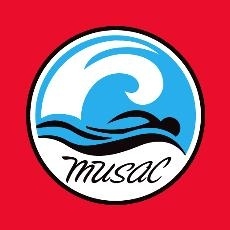Swimming Terminology
Block: The starting platform
Carded Athlete: An athlete that has achieved a standard of excellence in the sport of swimming based on FINA Points is eligible for carding. The athlete in turn would then receive funding from the Provincial and Federal governing bodies
Code of conduct: An agreement by the swimmer at registration stating the swimmer will abide by certain behavior rules.
D.Q.: Short for disqualified. This occurs when a swimmer has committed an infraction of some kind: i.e. freestyle kick in butterfly competition. A disqualified swimmer is not eligible to receive awards, nor can the time be used as an official time.
Drill: An exercise involving a portion or part of a stroke, used to improve technique
Dryland training: Training done out of the water that aids and enhances swimming performance, usually includes stretching, calisthenics and/or weight training.
FINA: International governing body for swimming (Fédération Internationale de Natation)
FINA Points: Point system based on times for individual swims as compared to world record swims. This system is sometimes used for qualifying purposes on Tour Teams and awards.
Flags: Backstroke flags are placed 5 meters from the end of the pool. They enable the backstrokers to execute a backstroke turn or finish more efficiency by counting their strokes from the flags to the wall.
Heat Sheet: The meet listings of swimmers indicating which events and heats each swimmer is assigned to. It is based on meet entry times. Heat sheets are usually available at the meet for purchase.
IM: Acronym for Individual Medley, an event in which the swimmer uses all four strokes in the following order: butterfly, backstroke, breaststroke and freestyle
Long Course: A pool 50 meters in length. Long course season, which runs from March to August in Canada, ends with National Championships. Most meets attended during long course season by provincial and senior swimmers are in 50 meter pools such as the pools in Etobicoke and Markham, Universities of Toronto, Laurentian, Wilfred Laurier, Brock or Guelph.
Masters: Available to swimmers 18 years and older, who want to participate in an organized, coached swim program for health & fitness, and/or for competition.
Marshalling: Area of the deck at a swim meet where swimmers are placed in there events
Meet: Competition designed to be a learning experience. By implementing what has been learned in practice, the swimmers test themselves against a clock to see how he/she is improving.
Meet Package: Information package put together by the host club of a swim meet. These are available on our website (if we are participating) or at www.swimming.ca
Official: A judge on the deck of the pool at pool at a sanctioned competition who enforces Swim Canada and/or FINA rules. There are stroke and turn judges, administrative officials, starters, timers and referees.
Pace Clock: Large clock with a large second hand and a smaller minute hand, used to check pace and maintain intervals in practice. Electronic versions are also seen at some pools
Prelims: Short for preliminaries, also called Heats or Trails in which swimmers qualify for the finals in the events.
Psych Sheet: Similar to a Heat Sheet or meet program, although a psych sheet does not indicate lane assignments for the heats of the events. Psych sheets are usually available from the Host Clubs website of the swim meet.
Relay: An event in which 4 swimmers compete together as a team to achieve one time.
Scratch: To withdraw from an event in a competition.
Seed Time: The best time a swimmer has in an event. That time is submitted by the coach when entering swimmers for a meet. It will determine where the swimmer is “seeded” in that particular race.
Short Course: A pool 25 meters in length. During short course season, which runs from October to March in Ontario, even 50 meter pools are divided in half and events are often run in both pools. All Huronia region pools are short course length or less (less does not meet standards but works for entry level and skill development events and training).
Split: A swimmer’s intermediate time in a race. Splits can be taken every lap and are used to determine if a swimmer is on pace. In a relay, a split is the time for one of the four individuals. Negative split means the second half of the race was faster than the first half and even split means times were equal.
Sprint(s): At meets, describes the shorter events (50 and 100 meters). In training, to swim as fast as possible for a short distance.
Taper: The final preparation phase involving a reduction in the training workload before an important swim meet. Sometimes tapering is accompanied by shaving, removal of body hair.
Time Trial: A time-only swim that is not part of a regular meet. Typically swum between heats and finals. Clubs also run Time Trials in order to get qualifying times for their swimmers for a future competition.
Touch Pad: A large sensitive board at the end of each lane where a swimmer’s touch is registered and sent electronically to the timing system.
Warm Down: Low-intensity swimming used by a swimmers after a race or main practice to rid the body of excess lactic acid and to gradually reduce heart rate and respiration.
Warm Up: Low-intensity swimming used by swimmer prior to a main practice set or race to get muscles loose and warm and gradually increase the heart rate and respiration.

